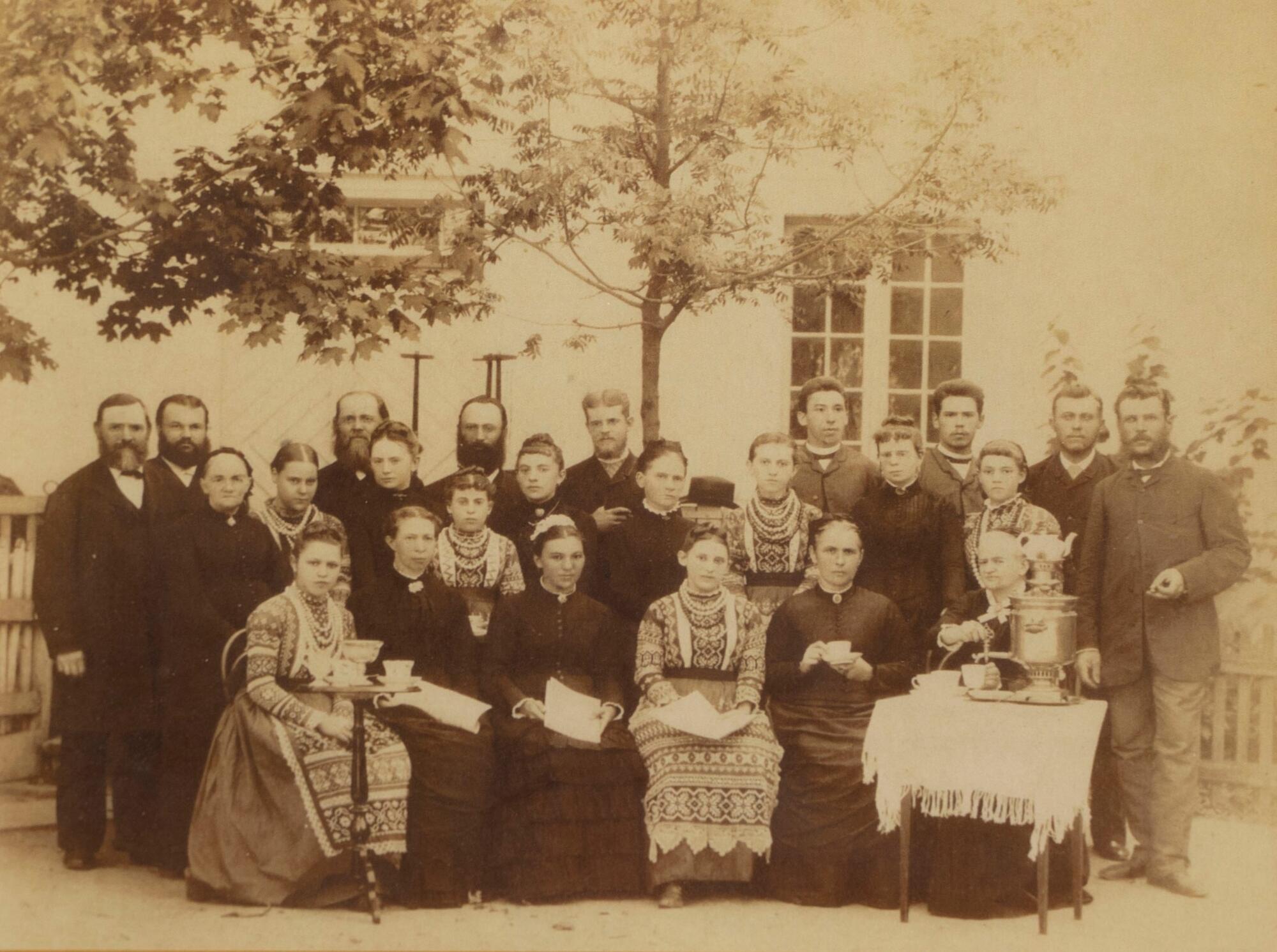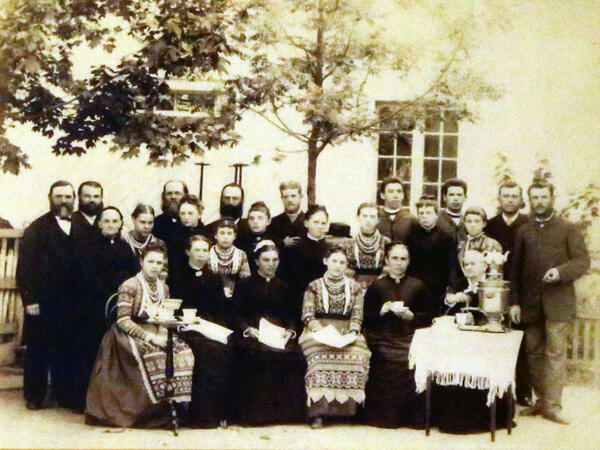This old photograph shows guests from Saxony next to the Sarepta church. Many of the inhabitants of Sarepta came from the Saxon lands, the territory of modern Germany. It was there, in the district of Görlitz where town of Herrnhut was founded in 1722 on the southern slope of Mount Hutsberg thanks to the theologian and bishop Nikolaus Zinzendorf. The name comes from the German Herrnhut - ‘under the protection of the Lord.’
Herrnhut was the first outpost, an advanced point, of the Moravian brothers in Germany. The Moravian brothers are representatives of the Protestant movements in Christianity. Then colonies of Hernguters appeared in other cities of Germany. And active missionary activity of brothers in different countries and parts of the world was the next stage of development. Sarepta, a colony of Hernguters in Russia, was formed in 1765.
In the second half of the 18th century, parties of immigrants of 10-50 people arrived in Russia from various provinces of Europe and America. In St. Petersburg, they took the oath, studied Russian language, customs, received travel money and passports. After that, accompanied by an agent, a Russian officer and a convoy, the missionaries traveled by water along the Volga or by land through Moscow to Sarepta.
The Sarepta community was granted the rights of administrative, communal and religious self-government and freedom of conscience. Community was allowed to construct churches with bell towers, schools and communal houses, to live according to her communal equalizing order, statutes, and to celebrate rituals. Colonists were released from military and civil service after taking an oath of allegiance. For these benefits and civil rights, the community paid taxes to the treasury.
After the abolition of the fraternal union in Sarepta in 1892, those Hernguters who preferred to remain in the union left Russia. Those who wished to stay in the settlement joined the Lutheran Evangelical Church of Russia.
But the Sareptians continued to maintain close spiritual and family ties with Saxony. The photograph at the exhibition is evidence that Sarepta received guests from Saxony, that the contacts of the Sareptians with the metropolis continued after February 20, 1892, when an administration message abolishing the fraternal community in the village was read out in the Sarepta church.
Herrnhut was the first outpost, an advanced point, of the Moravian brothers in Germany. The Moravian brothers are representatives of the Protestant movements in Christianity. Then colonies of Hernguters appeared in other cities of Germany. And active missionary activity of brothers in different countries and parts of the world was the next stage of development. Sarepta, a colony of Hernguters in Russia, was formed in 1765.
In the second half of the 18th century, parties of immigrants of 10-50 people arrived in Russia from various provinces of Europe and America. In St. Petersburg, they took the oath, studied Russian language, customs, received travel money and passports. After that, accompanied by an agent, a Russian officer and a convoy, the missionaries traveled by water along the Volga or by land through Moscow to Sarepta.
The Sarepta community was granted the rights of administrative, communal and religious self-government and freedom of conscience. Community was allowed to construct churches with bell towers, schools and communal houses, to live according to her communal equalizing order, statutes, and to celebrate rituals. Colonists were released from military and civil service after taking an oath of allegiance. For these benefits and civil rights, the community paid taxes to the treasury.
After the abolition of the fraternal union in Sarepta in 1892, those Hernguters who preferred to remain in the union left Russia. Those who wished to stay in the settlement joined the Lutheran Evangelical Church of Russia.
But the Sareptians continued to maintain close spiritual and family ties with Saxony. The photograph at the exhibition is evidence that Sarepta received guests from Saxony, that the contacts of the Sareptians with the metropolis continued after February 20, 1892, when an administration message abolishing the fraternal community in the village was read out in the Sarepta church.



